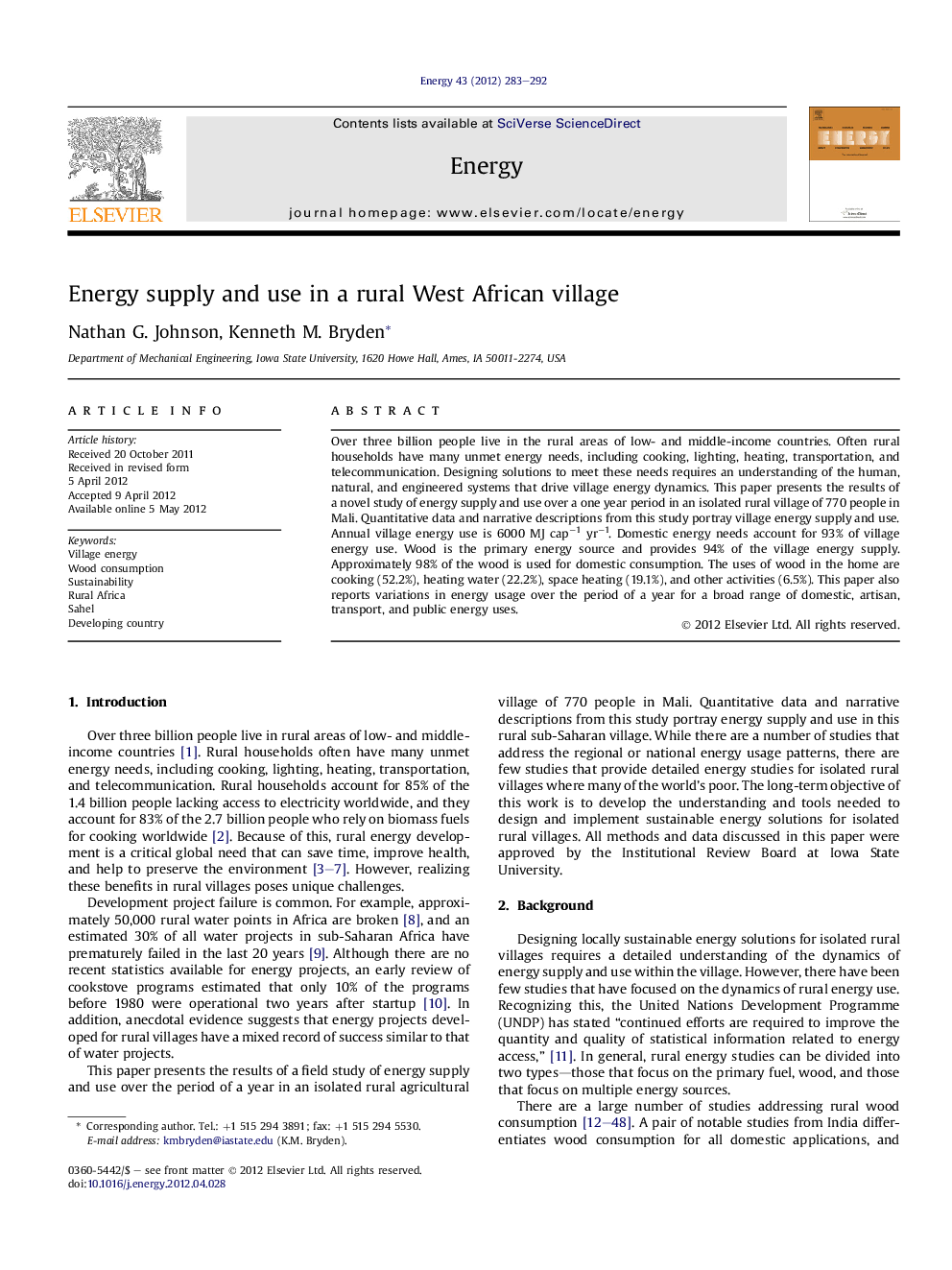| کد مقاله | کد نشریه | سال انتشار | مقاله انگلیسی | نسخه تمام متن |
|---|---|---|---|---|
| 1733769 | 1016145 | 2012 | 10 صفحه PDF | دانلود رایگان |

Over three billion people live in the rural areas of low- and middle-income countries. Often rural households have many unmet energy needs, including cooking, lighting, heating, transportation, and telecommunication. Designing solutions to meet these needs requires an understanding of the human, natural, and engineered systems that drive village energy dynamics. This paper presents the results of a novel study of energy supply and use over a one year period in an isolated rural village of 770 people in Mali. Quantitative data and narrative descriptions from this study portray village energy supply and use. Annual village energy use is 6000 MJ cap−1 yr−1. Domestic energy needs account for 93% of village energy use. Wood is the primary energy source and provides 94% of the village energy supply. Approximately 98% of the wood is used for domestic consumption. The uses of wood in the home are cooking (52.2%), heating water (22.2%), space heating (19.1%), and other activities (6.5%). This paper also reports variations in energy usage over the period of a year for a broad range of domestic, artisan, transport, and public energy uses.
► Village energy supply and use is driven by human, natural, and engineered systems.
► Village energy use varies by 250% between the hot and cold seasons.
► Domestic wood consumption accounts for 92% of village energy.
► Solar PV cells and batteries supply power to pumps, lights, and personal electronics.
► Every household uses multiple energy sources to meet basic needs.
Journal: Energy - Volume 43, Issue 1, July 2012, Pages 283–292